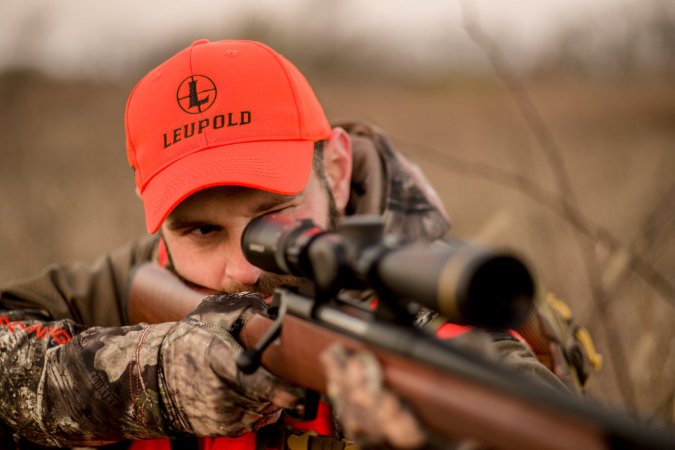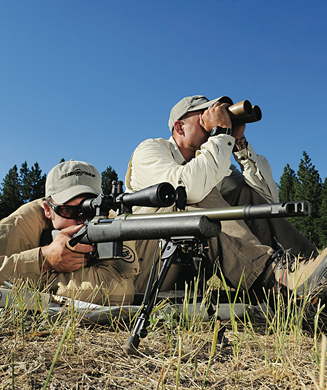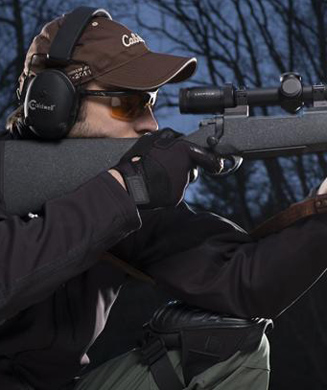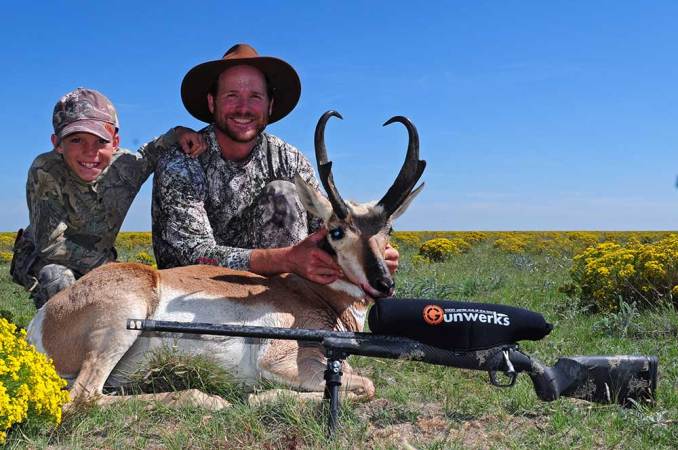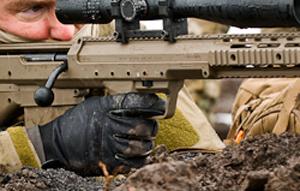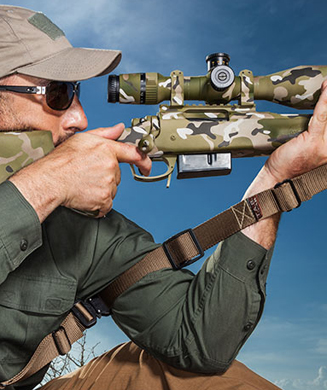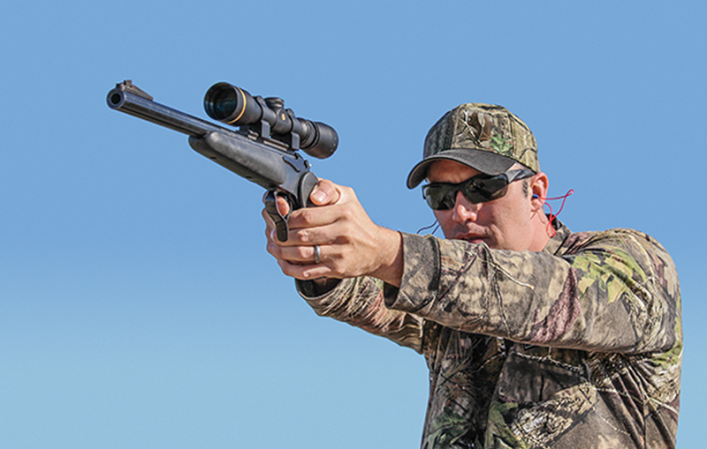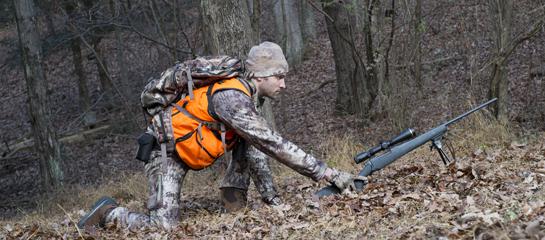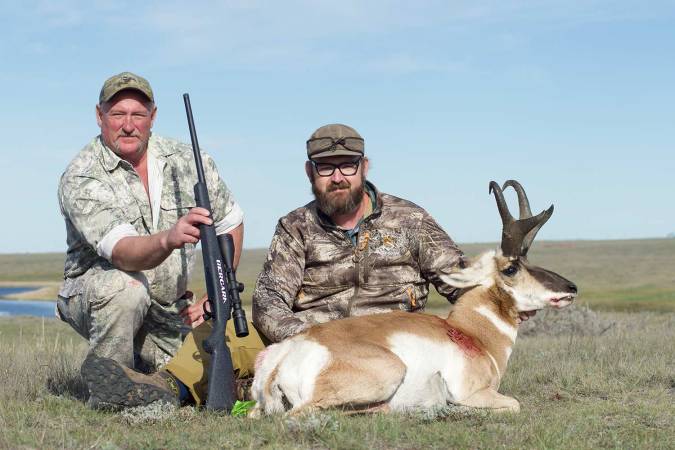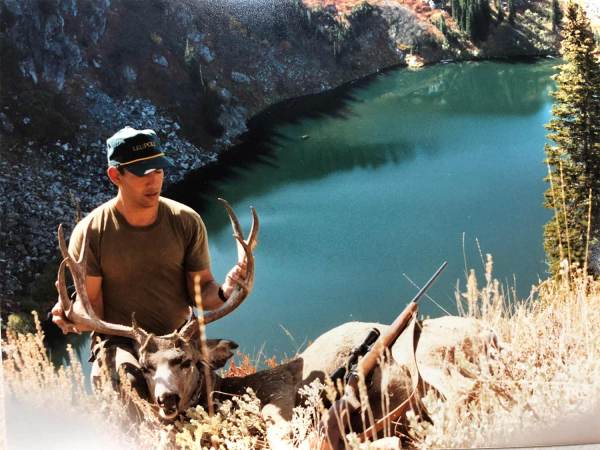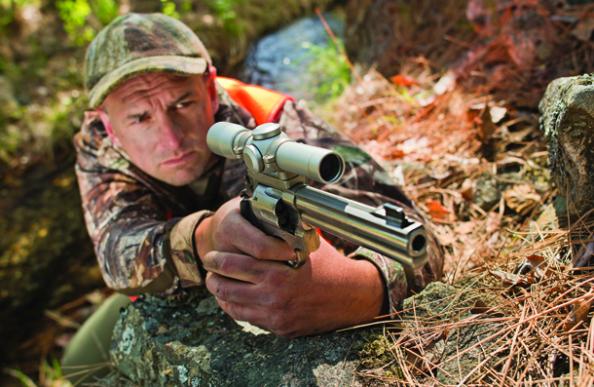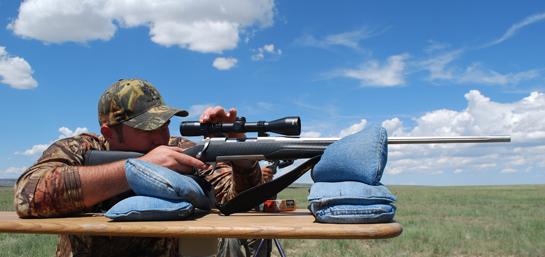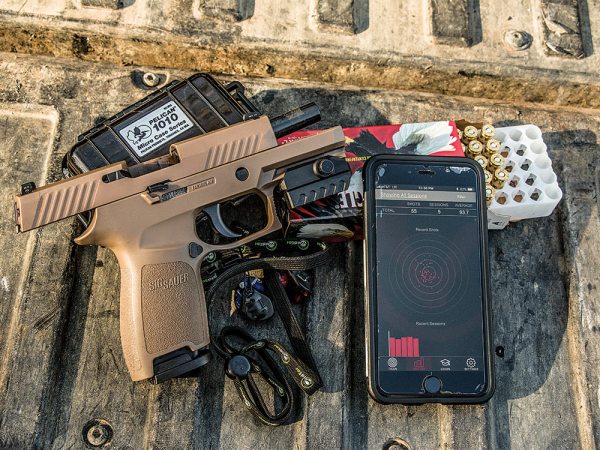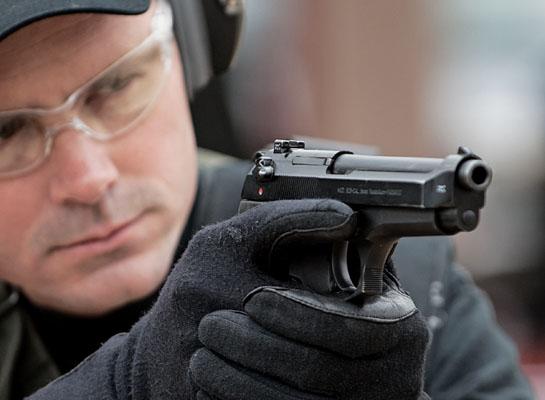We may earn revenue from the products available on this page and participate in affiliate programs. Learn More ›
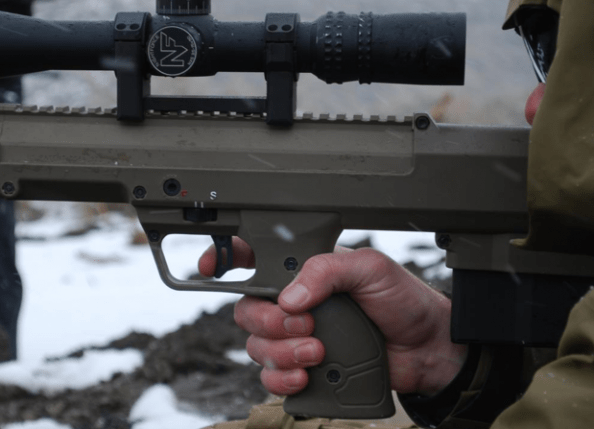
On day one of my four-day sniper training course the instructor knelt down next to me and said “Young man, I love ya, but I’m going to beat the hell out of you if you don’t stay with your trigger.”
I was lying prone on the frozen ground at Sniper Country, a 50,000-acre shooter’s paradise in Utah, and I had just sent a .338 Lapua round 300 yards down range into the center of an 18 by 24-inch steel plate. I was pretty pleased with the shot, but the instructor was clearly not impressed (however he didn’t actually beat the hell out of me). My offense was what I did after I squeezed the trigger. Instead of hanging in there and following through, I allowed my index finger to slip out of proper position as the rifle charged into my shoulder.
With all of the sexiness Hollywood has created around long-range shooting (see Shooter, Enemy at the Gates, Sniper) it’s easy to forget that one of the most important aspects of accurate shooting is also one of the most fundamental: pulling the trigger correctly. You can get away with fairly sloppy trigger form if you’re simply trying to poke holes in a target at a few hundred yards, but if you’re aiming for precision long-range shooting at targets out past 300 yards, the connection between you and the trigger must become sacred.
Here are some things I learned from shooting instructor Jacob Bynum about the not so simple act of pulling the trigger.
90 is the magic number
Your finger should make 90 degree angles with the rifle. This will ensure that you pull the trigger straight back and don’t send the bullet veering off to the left or right. If you jack the trigger even slightly to the left or right it will send your bullet off target horizontally. The best way to make sure that you’re at 90 is to look at your finger nail and make sure it is pointing perpendicular to the direction you’re shooting and stays that way after the shot.
Dry fire is your friend
Dry firing is free, easy and essential to better shooting. Get behind your rifle, aim it at the target and squeeze the trigger like normal. This will allow you to truly analyze your form without having to worry about recoil. It’s also a good way to get familiar with your trigger and keep you from flinching.
Don’t slap it
We’ve all been there: there’s no rock solid rest, the target is in the scope but the crosshairs are moving in small circles on and off the target. There’s no time to get a better rest, it’s now or never. The natural thing to do is wait until the crosshairs hover back over the target and then jump on the trigger. This will generally work for close range shots, but if you want to go deep you need to keep your trigger squeeze consistent just like if you were shooting from the bench. This is where all that practice dry firing comes in. By now you know exactly when your trigger will fire. Time your squeeze so that it will fire just as your crosshairs cover the bullseye.
Don’t let it surprise you
Old wisdom says that you should squeeze the trigger until it goes off and the shot should surprise you. According to Bynum, this is what you tell a kid who just started shooting in order to keep him from flinching before the shot. A really good marksman knows exactly when his gun is going to fire and is ready for the recoil but doesn’t flinch in anticipation of it.
Follow through
This is what I spent three days working on. Pulling the trigger and holding it through the shot. It’s easy to let your finger jump off the trigger or hook around the trigger so your finger nail is pointing back toward you instead of perpendicular. The best advice I got on this was from Brent Wheat, a veteran police officer and freelance gun writer: Pull the trigger and mentally count to one before taking your finger off.
It sounds simple, but just like everything else in long-range shooting, it takes a lot of practice to master.
Come back to outdoorlife.com for more blogs, galleries and video from my trip to Sniper Country.


